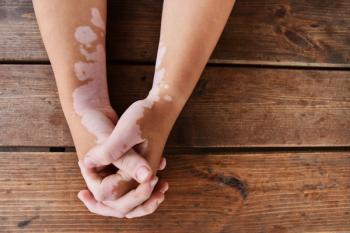
- Consultant for Pediatricians Vol 2 No 6
- Volume 2
- Issue 6
Bullous Impetigo in a 3-Year-Old Girl
The numerous superficial, rounded, red-based ulcerations on the left buttock of a 3-year-old girl are characteristic of bullous impetigo.
Bullous Impetigo
By Robert P. Blereau, MD
The numerous superficial, rounded, red-based ulcerations on the left buttock of a 3-year-old girl are characteristic of bullous impetigo. The varnish-like crust on the largest lesion is also typical of this skin infection.
A culture of material from one of the several vesicles containing purulent fluid grew Staphylococcus aureus, catalase-positive. S aureus is the primary pathogen in both bullous and nonbullous impetigo. The staphylococcal epidermolytic toxin causes intraepidermal cleavage below or within the stratum granulosum to produce the typical lesion. The vesicles enlarge into bullae, which rupture and may form the tinea-like scale that is seen in several lesions.
This condition usually affects exposed areas; this child’s infection may have begun with a bite or a scratch on the buttock. She was treated with oral cephalexin and topical mupirocin ointment. The bullous impetigo resolved rapidly.
Articles in this issue
over 22 years ago
Staphylococcal Scalded Skin Syndrome in a 2-Year-Old Girlover 22 years ago
Herpangina in a 17-Year-Old Boyover 22 years ago
Erysipelasover 22 years ago
Complications of ChickenpoxNewsletter
Access practical, evidence-based guidance to support better care for our youngest patients. Join our email list for the latest clinical updates.









